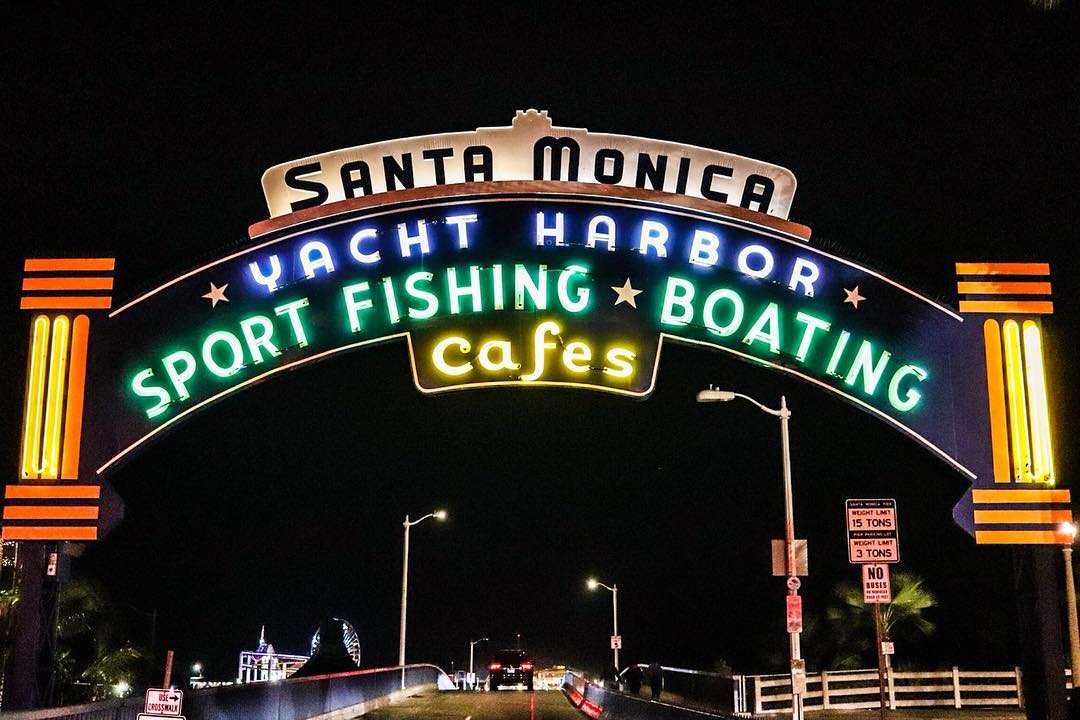The History of the Santa Monica Pier Sign
Published on October 21, 2020
Learn the history behind the iconic Santa Monica Pier sign.
You’d be hard pressed to find anything more identified with the City of Santa Monica than the Santa Monica Pier Sign. It is to Santa Monica what the Golden Arches are to McDonald’s, the Empire State Building is to New York, the Eiffel Tower is to Paris. It is iconic.
The sign has been seen in countless film productions, not to mention the innumerable personal photos taken by visitors to the area. It stands as an invitation to an experience you won’t find elsewhere, which is exactly what the Santa Monica Businessmen’s Association had in mind when they commissioned it in 1940.
The Pier had been in business awhile before they got around to putting up a sign, with its creation in 1909. In 1939, a highway project connecting the then-Roosevelt Highway (it would be renamed the Pacific Coast Highway in 1941) to Santa Monica’s city streets was begun, and in the process the old access to the Pier was removed. A ramp was designed to bring traffic from the end of Colorado Avenue right down onto the Pier itself. After its completion, the Santa Monica Businessmen’s Association decided to erect the sign to promote the Pier as a tourist destination.
They paid Fred Lehman and his staff at the Pan-Pacific Neon Sign company $2,000 to design and build the arched sign. Pan-Pacific chose a Streamline Moderne style with blue, white, and gold paint. Welcoming, arched signs were popular in small towns in the earlier parts of the 1900s.
Per the official records, “The Santa Monica Pier Sign is a curved neon sign approximately twenty feet high at its highest point and twelve feet high at its lowest…a stylized metal arch, approximately thirty-five feet wide, attached to a utilitarian steel lattice frame and posts.” It was officially unveiled in 1941.
The information on the sign was correct, for a short time. The outbreak of World War II pretty much ended the yacht harbor aspect, but the sport fishing element continued to thrive. The neon was even extinguished during the war. There were issues with the breakwater that had been built in the 1930s that made boating challenging, and by the early 1980s, there were no more boats sidling up. However, the words still remained on the sign.
The City wisely trademarked the sign and owns it outright and in June of 2012 designated it as a historic Santa Monica landmark.
The occasional truck hits it and according to the historical documents, it was moved in the 1950s to be closer to Ocean Avenue. It was originally in the center of the bridge. Although it’s been repainted, the only replaced elements have been the neon tubing and wiring. Everything else is original. The official report reads “one of the finest existing samples of signage from the neon era, dating from approximately 1930–1960.” And it still welcomes you today.
This information was provided courtesy of Santa Monica local Alex Mebane. Mebane wrote and published a book on all the iconic signs in Santa Monica – you can learn more and purchase his book at www.signsofsantamonica.com, as well as check out fun facts on his Instagram.
Feature image courtesy of @oscarr.arriola

 SEARCH
SEARCH
